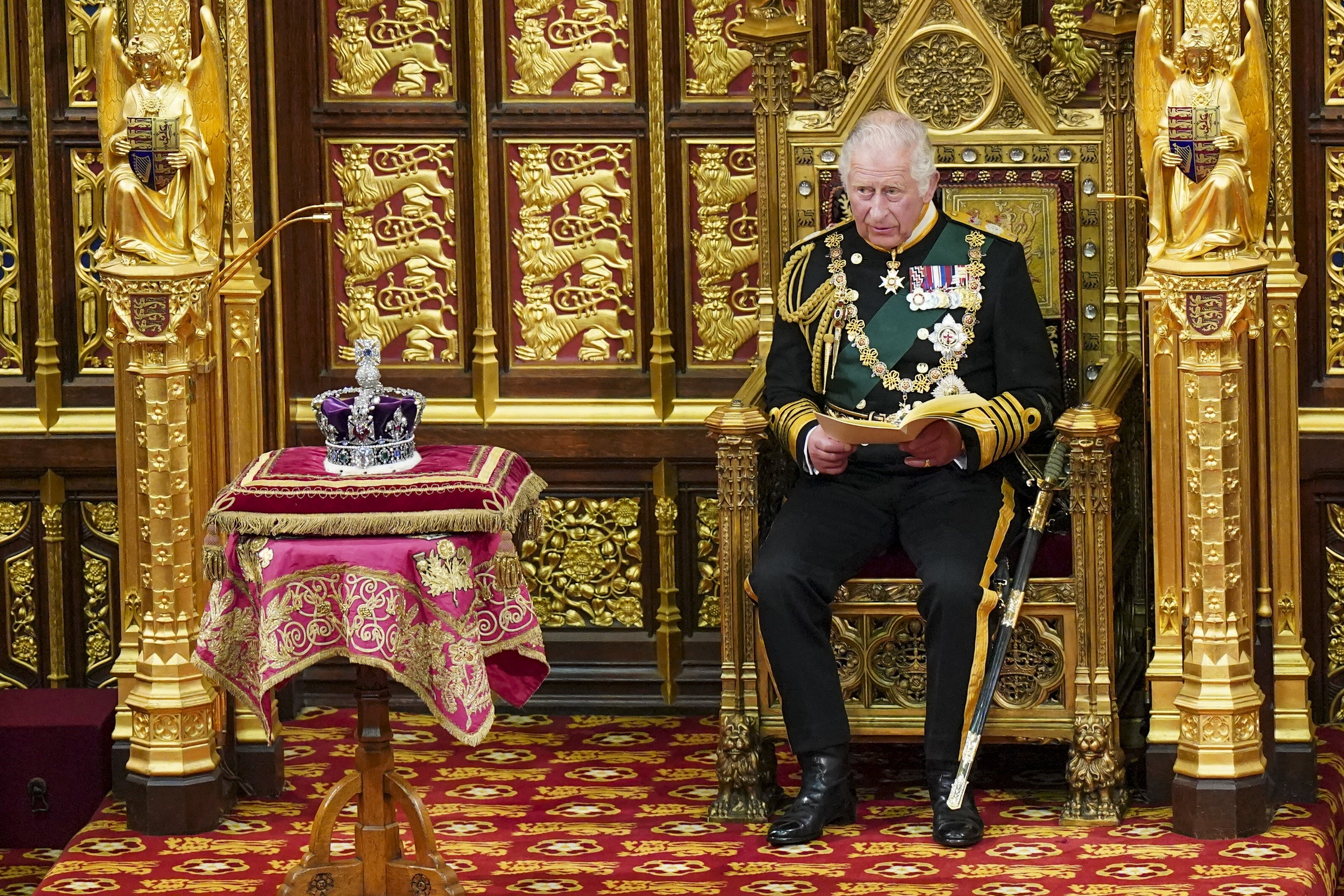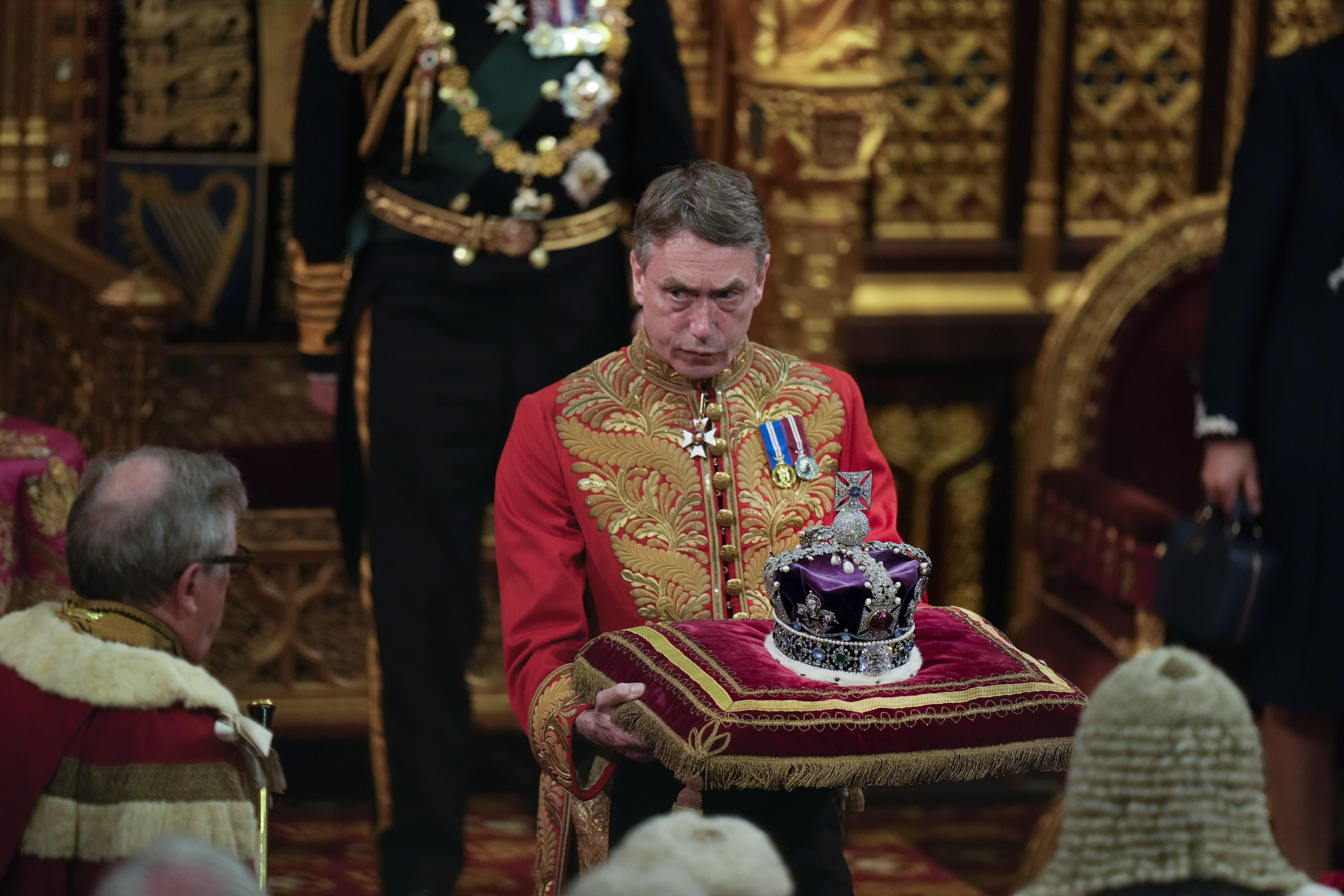King’s Speech 2023: Charles and Black Rod’s roles in the State Opening of Parliament explained
The event marks Charles’s first time delivering the opening speech as monarch
On Tuesday, King Charles will deliver his first State Opening of Parliament as monarch – an event that has been long been steeped in custom, pomp and pageantry.
The event marks the formal start of the parliamentary year and sets out the government’s proposed policies and legislation for the 2023-24 session.
The late Queen Elizabeth II delivered the speech a total of 67 times during her reign and only missed it only a handful of times including the year of her death last year. Charles delivered a speech on behalf of his mother in May 2022. He will now be embracing traditions that have been in place since the 16th century for the first time as monarch. Here’s all of the pomp and pageantry to expect from the event…
Charles is expected to travel to the Houses of Parliament in the Irish State Coach, escorted by members of the Household Cavalry Mounted Regiment. When he arrives, the national anthem will be played, and he will be greeted by the Lord Great Chamberlain, Rupert Carington, and the Earl of Marshal, Edward Fitzalan-Howard.
Royal regalia
The King will then continue to the robing room, where he will put on the ceremonial Parliament Robe of State – which features a long, crimson red velvet train with gold embroidery – and Imperial State Crown, which is covered in nearly 3,000 precious stones.
Charles is expected to be carrying the royal regalia, including the crimson velvet Cap of Maintenance and the steel-bladed Sword of State.
Members of Parliament are then summoned by Black Rod, an official position currently held by British ambassador Sarah Clarke, who is the first female holder of the role in its 650-year history. Before entering into the chamber, the Black Rod has the door shut in their face, symbolising the chamber’s independence from the monarchy. The Black Rod then strikes the door three times before it is opened.
The king’s speech
The speech will be read in the House of Lords chamber by King Charles but not in his own words – it is written by the government and contains an outline of its policies and proposed legislation for the new parliamentary session.
It is unlikely that Charles will be wearing the crown for the entire duration of the ceremony, given its weight. When Charles read his mother’s speech on her behalf last year, the crown was carried on a cushion and placed on a table nearby.

What is the Imperial State Crown?
While the crown has existed in various forms in the past, the current version of the State Imperial Crown was made in 1937 for the coronation of King George VI and was worn by the Queen after her coronation in 1953.
More than 2,900 precious stones adorn the crown, including the Cullinan II diamond, St Edward’s Sapphire, the Stuart Sapphire and the Black Prince’s Ruby.
At the front of the crown band is the “Cullinan II”, the second largest stone cut from the Cullinan Diamond, also known as the Second Star of Africa.

It is covered with 1,363 brilliant-cut, 1,273 rose-cut and 142 table-cut diamonds, 277 pearls, 17 sapphires, 11 emeralds, and four other rubies. It also has a purple velvet cap with an ermine border and is lined with white silk.
This crown, also known as the Crown of State, was last worn by the king as he left his coronation ceremony in May.
The Imperial State Crown does not feature the most controversial diamond in the crown jewels: the Koh-i-Noor diamond, which Buckingham Palace chose not to involve in the coronation ceremony in May, due to the controversy surrounding its ownership.

The Koh-i-Noor diamond was mined in India and is one of the largest-cut diamonds in the world, weighing 105.6 carats (21.12g). The first written record of the Koh-i-Noor diamond appears in 1628, during the Mughal Empire. The diamond was set into Mughal ruler Shah Jahan’s Peacock Throne, alongside the Timur Ruby.
The Koh-i-noor was acquired by the British on the annexation of the Punjab in 1849. It was placed among the crown jewels of Queen Victoria and in 1851, the diamond was put on display at the Great Exhibition in London.
The Indian government has demanded that the British return the Koh-i-Noor diamond to them several times over the years after the country gained independence in 1947. Its most recent request was made in 2016, when it said it would make every effort to bring back the diamond.
Join our commenting forum
Join thought-provoking conversations, follow other Independent readers and see their replies
Comments
Bookmark popover
Removed from bookmarks